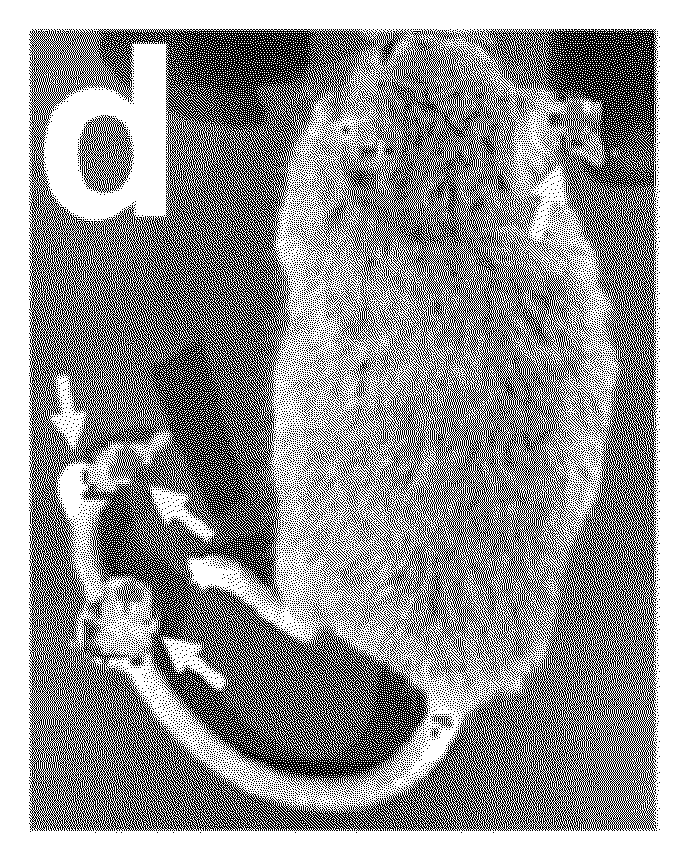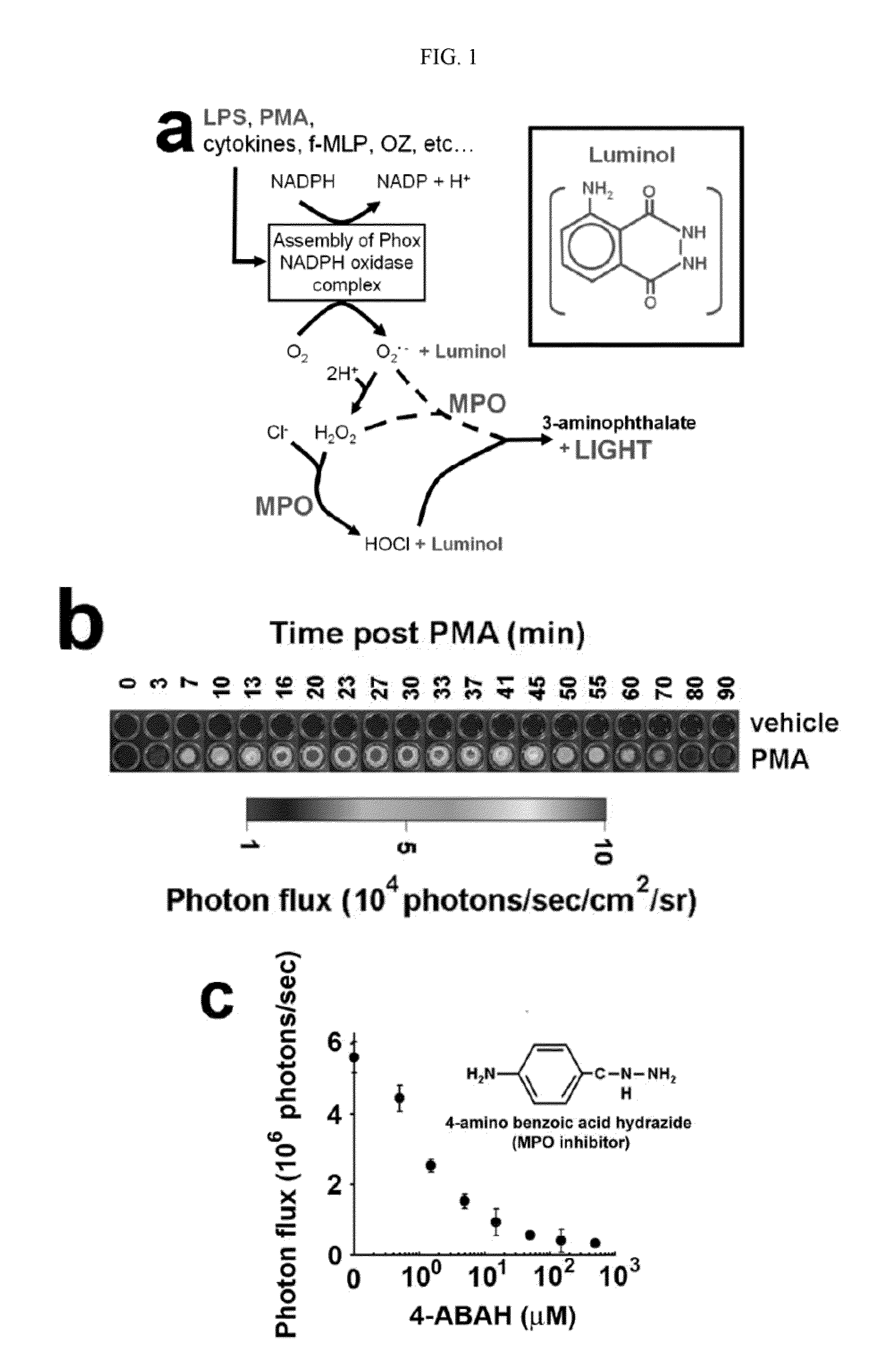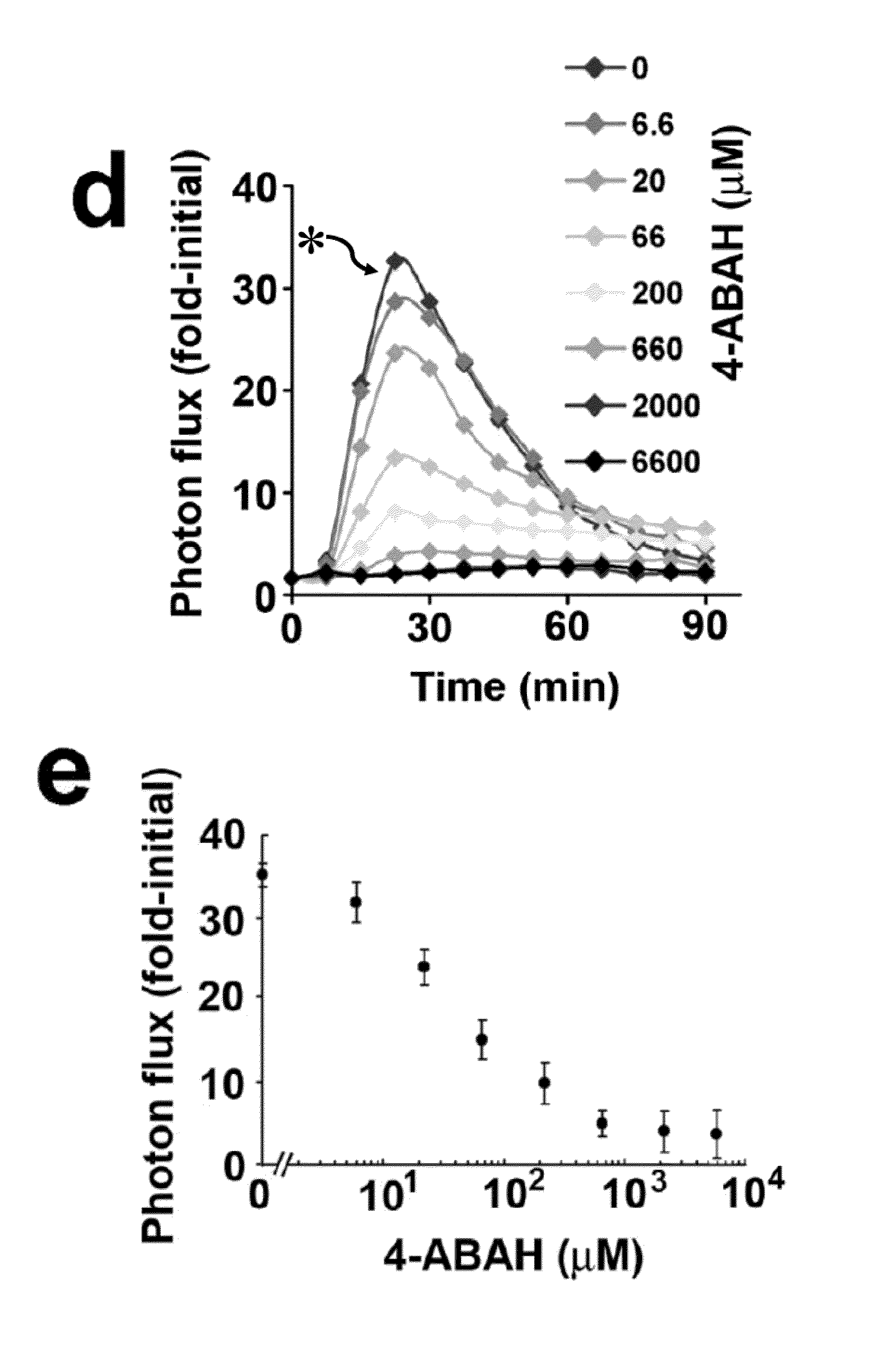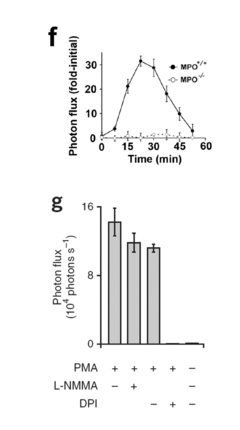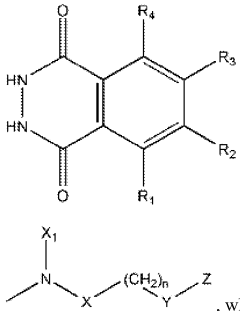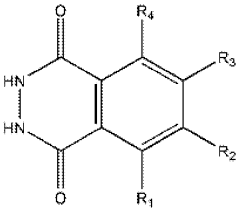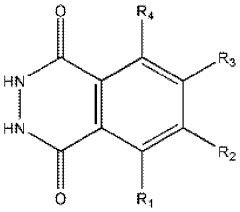How Luminol Proliferates Knowledge in Research Domains?
AUG 19, 20259 MIN READ
Generate Your Research Report Instantly with AI Agent
Patsnap Eureka helps you evaluate technical feasibility & market potential.
Luminol Research Background and Objectives
Luminol, a chemiluminescent compound, has been a cornerstone in forensic science and biochemical research for decades. Its ability to emit light when oxidized has made it an invaluable tool in various scientific disciplines. The journey of luminol in research domains began in the early 20th century when it was first synthesized by German chemist H. O. Albrecht in 1928. Since then, its applications have expanded far beyond its initial use in crime scene investigations.
The proliferation of luminol in research domains is primarily driven by its unique properties and versatility. As a sensitive chemiluminescent reagent, luminol has found applications in fields ranging from forensic science to environmental monitoring, medical diagnostics, and even space exploration. Its ability to detect trace amounts of blood and certain metal ions has revolutionized crime scene analysis and medical testing procedures.
In recent years, the research objectives surrounding luminol have evolved to focus on enhancing its sensitivity, specificity, and applicability across diverse scientific disciplines. Scientists are exploring ways to modify the luminol molecule to improve its performance in different environments and to expand its range of detectable substances. This ongoing research aims to overcome current limitations and push the boundaries of what can be achieved with chemiluminescence technology.
One of the key goals in luminol research is to develop more sensitive and selective detection methods. This includes creating new formulations that can distinguish between different types of biological fluids or identify specific metal ions with greater accuracy. Additionally, researchers are working on improving the stability of luminol solutions and developing methods to enhance the intensity and duration of the light emission, which could lead to more reliable and efficient detection systems.
Another important objective is to expand the application of luminol-based techniques in emerging fields such as nanotechnology and biosensors. By integrating luminol with advanced materials and detection systems, researchers aim to create highly sensitive and miniaturized devices for rapid on-site analysis in various settings, from medical diagnostics to environmental monitoring.
The proliferation of knowledge in luminol research is also driven by interdisciplinary collaborations. As the potential applications of luminol continue to grow, researchers from diverse fields are coming together to share insights and develop innovative solutions. This cross-pollination of ideas is leading to novel applications and pushing the boundaries of what can be achieved with chemiluminescence technology.
The proliferation of luminol in research domains is primarily driven by its unique properties and versatility. As a sensitive chemiluminescent reagent, luminol has found applications in fields ranging from forensic science to environmental monitoring, medical diagnostics, and even space exploration. Its ability to detect trace amounts of blood and certain metal ions has revolutionized crime scene analysis and medical testing procedures.
In recent years, the research objectives surrounding luminol have evolved to focus on enhancing its sensitivity, specificity, and applicability across diverse scientific disciplines. Scientists are exploring ways to modify the luminol molecule to improve its performance in different environments and to expand its range of detectable substances. This ongoing research aims to overcome current limitations and push the boundaries of what can be achieved with chemiluminescence technology.
One of the key goals in luminol research is to develop more sensitive and selective detection methods. This includes creating new formulations that can distinguish between different types of biological fluids or identify specific metal ions with greater accuracy. Additionally, researchers are working on improving the stability of luminol solutions and developing methods to enhance the intensity and duration of the light emission, which could lead to more reliable and efficient detection systems.
Another important objective is to expand the application of luminol-based techniques in emerging fields such as nanotechnology and biosensors. By integrating luminol with advanced materials and detection systems, researchers aim to create highly sensitive and miniaturized devices for rapid on-site analysis in various settings, from medical diagnostics to environmental monitoring.
The proliferation of knowledge in luminol research is also driven by interdisciplinary collaborations. As the potential applications of luminol continue to grow, researchers from diverse fields are coming together to share insights and develop innovative solutions. This cross-pollination of ideas is leading to novel applications and pushing the boundaries of what can be achieved with chemiluminescence technology.
Applications in Scientific Knowledge Dissemination
Luminol has emerged as a powerful tool for proliferating knowledge in various research domains, particularly in scientific knowledge dissemination. This chemiluminescent compound has found applications beyond its traditional use in forensic science, extending its reach to educational settings, public engagement initiatives, and interdisciplinary research collaborations.
In educational contexts, luminol demonstrations have become a popular method for introducing students to concepts in chemistry, biochemistry, and forensic science. The vivid blue glow produced by the luminol reaction captivates students' attention, making abstract chemical concepts more tangible and memorable. This visual impact enhances learning retention and stimulates curiosity about scientific processes. Many universities and high schools now incorporate luminol experiments into their curricula, allowing students to gain hands-on experience with chemical reactions and analytical techniques.
Public engagement initiatives have also benefited from luminol's visual appeal. Science museums and outreach programs frequently use luminol demonstrations to illustrate scientific principles to the general public. These interactive displays help bridge the gap between complex scientific concepts and public understanding, fostering a greater appreciation for scientific research and its real-world applications. The accessibility of luminol experiments has made them a staple in science fairs, community events, and educational television programs, effectively disseminating scientific knowledge to diverse audiences.
In the realm of interdisciplinary research, luminol has facilitated knowledge exchange between different scientific fields. For instance, the principles behind luminol's chemiluminescence have inspired developments in biomedical imaging techniques. Researchers in medicine and biology have adapted luminol-based methods for visualizing cellular processes and detecting specific biomolecules. This cross-pollination of ideas has led to innovative approaches in disease diagnosis and monitoring, demonstrating how knowledge from one field can catalyze advancements in another.
Furthermore, luminol has played a role in enhancing scientific communication and collaboration. The compound's well-known properties and widespread use have made it a common reference point in discussions across various scientific disciplines. This shared understanding facilitates dialogue between researchers from different backgrounds, promoting interdisciplinary collaborations and the exchange of ideas. Conferences and workshops centered around luminol and related technologies have become platforms for knowledge dissemination, bringing together experts from diverse fields to share insights and explore new applications.
The digital age has amplified luminol's impact on knowledge proliferation. Online platforms and social media have enabled the rapid sharing of luminol-related research findings, experimental protocols, and educational resources. This accessibility has democratized scientific knowledge, allowing researchers, educators, and enthusiasts worldwide to engage with and build upon luminol-related discoveries. Virtual laboratories and simulation tools incorporating luminol reactions have further expanded the reach of scientific education, overcoming geographical and resource limitations.
In educational contexts, luminol demonstrations have become a popular method for introducing students to concepts in chemistry, biochemistry, and forensic science. The vivid blue glow produced by the luminol reaction captivates students' attention, making abstract chemical concepts more tangible and memorable. This visual impact enhances learning retention and stimulates curiosity about scientific processes. Many universities and high schools now incorporate luminol experiments into their curricula, allowing students to gain hands-on experience with chemical reactions and analytical techniques.
Public engagement initiatives have also benefited from luminol's visual appeal. Science museums and outreach programs frequently use luminol demonstrations to illustrate scientific principles to the general public. These interactive displays help bridge the gap between complex scientific concepts and public understanding, fostering a greater appreciation for scientific research and its real-world applications. The accessibility of luminol experiments has made them a staple in science fairs, community events, and educational television programs, effectively disseminating scientific knowledge to diverse audiences.
In the realm of interdisciplinary research, luminol has facilitated knowledge exchange between different scientific fields. For instance, the principles behind luminol's chemiluminescence have inspired developments in biomedical imaging techniques. Researchers in medicine and biology have adapted luminol-based methods for visualizing cellular processes and detecting specific biomolecules. This cross-pollination of ideas has led to innovative approaches in disease diagnosis and monitoring, demonstrating how knowledge from one field can catalyze advancements in another.
Furthermore, luminol has played a role in enhancing scientific communication and collaboration. The compound's well-known properties and widespread use have made it a common reference point in discussions across various scientific disciplines. This shared understanding facilitates dialogue between researchers from different backgrounds, promoting interdisciplinary collaborations and the exchange of ideas. Conferences and workshops centered around luminol and related technologies have become platforms for knowledge dissemination, bringing together experts from diverse fields to share insights and explore new applications.
The digital age has amplified luminol's impact on knowledge proliferation. Online platforms and social media have enabled the rapid sharing of luminol-related research findings, experimental protocols, and educational resources. This accessibility has democratized scientific knowledge, allowing researchers, educators, and enthusiasts worldwide to engage with and build upon luminol-related discoveries. Virtual laboratories and simulation tools incorporating luminol reactions have further expanded the reach of scientific education, overcoming geographical and resource limitations.
Current Luminol Technology and Challenges
Luminol, a chemiluminescent compound, has been widely used in forensic science and biochemical research for decades. However, its current applications and technological advancements face several challenges that hinder its full potential in proliferating knowledge across various research domains.
The primary challenge lies in the sensitivity and specificity of luminol-based detection methods. While luminol is known for its ability to detect trace amounts of blood, it can also produce false positives when reacting with other substances such as certain plant materials or cleaning agents. This lack of specificity can lead to misinterpretation of results, particularly in forensic investigations where accuracy is crucial.
Another significant challenge is the stability of the luminol reaction. The chemiluminescent glow produced by luminol is relatively short-lived, which can limit its effectiveness in certain research applications. Researchers are constantly working on developing more stable formulations and enhancing the duration of the luminescent signal to improve its utility in various experimental settings.
The quantification of luminol-based assays presents another hurdle. While luminol can provide qualitative information about the presence of certain substances, accurately quantifying the amount of target molecules remains challenging. This limitation restricts its use in research domains that require precise measurements and quantitative analysis.
Environmental factors also pose challenges to luminol technology. The reaction is sensitive to pH levels, temperature, and the presence of interfering substances. These variables can affect the reliability and reproducibility of results, making it difficult to standardize luminol-based protocols across different research environments.
In the field of biomedical research, the application of luminol faces limitations in terms of in vivo imaging. While luminol has shown promise in visualizing inflammation and other biological processes, its use in live animal models is constrained by factors such as tissue penetration depth and potential toxicity.
The integration of luminol technology with other analytical techniques presents both opportunities and challenges. Researchers are exploring ways to combine luminol-based detection with advanced imaging systems, microfluidic devices, and nanotechnology. However, these integrations often require complex instrumentation and expertise, limiting their widespread adoption.
Lastly, the development of novel luminol derivatives and formulations is an ongoing challenge. Scientists are working on creating more sensitive and selective variants of luminol to expand its applications in different research domains. However, the synthesis and characterization of these new compounds often involve time-consuming and resource-intensive processes.
Despite these challenges, the research community continues to innovate and refine luminol technology. Efforts are being made to address these limitations through interdisciplinary collaborations, combining expertise from chemistry, biology, forensic science, and materials science. As these challenges are gradually overcome, luminol's potential to proliferate knowledge across diverse research domains is expected to grow significantly.
The primary challenge lies in the sensitivity and specificity of luminol-based detection methods. While luminol is known for its ability to detect trace amounts of blood, it can also produce false positives when reacting with other substances such as certain plant materials or cleaning agents. This lack of specificity can lead to misinterpretation of results, particularly in forensic investigations where accuracy is crucial.
Another significant challenge is the stability of the luminol reaction. The chemiluminescent glow produced by luminol is relatively short-lived, which can limit its effectiveness in certain research applications. Researchers are constantly working on developing more stable formulations and enhancing the duration of the luminescent signal to improve its utility in various experimental settings.
The quantification of luminol-based assays presents another hurdle. While luminol can provide qualitative information about the presence of certain substances, accurately quantifying the amount of target molecules remains challenging. This limitation restricts its use in research domains that require precise measurements and quantitative analysis.
Environmental factors also pose challenges to luminol technology. The reaction is sensitive to pH levels, temperature, and the presence of interfering substances. These variables can affect the reliability and reproducibility of results, making it difficult to standardize luminol-based protocols across different research environments.
In the field of biomedical research, the application of luminol faces limitations in terms of in vivo imaging. While luminol has shown promise in visualizing inflammation and other biological processes, its use in live animal models is constrained by factors such as tissue penetration depth and potential toxicity.
The integration of luminol technology with other analytical techniques presents both opportunities and challenges. Researchers are exploring ways to combine luminol-based detection with advanced imaging systems, microfluidic devices, and nanotechnology. However, these integrations often require complex instrumentation and expertise, limiting their widespread adoption.
Lastly, the development of novel luminol derivatives and formulations is an ongoing challenge. Scientists are working on creating more sensitive and selective variants of luminol to expand its applications in different research domains. However, the synthesis and characterization of these new compounds often involve time-consuming and resource-intensive processes.
Despite these challenges, the research community continues to innovate and refine luminol technology. Efforts are being made to address these limitations through interdisciplinary collaborations, combining expertise from chemistry, biology, forensic science, and materials science. As these challenges are gradually overcome, luminol's potential to proliferate knowledge across diverse research domains is expected to grow significantly.
Existing Luminol-based Knowledge Proliferation Methods
01 Luminol-based detection systems
Luminol is widely used in detection systems for various applications. These systems utilize the chemiluminescent properties of luminol to detect and analyze specific substances or conditions. The technology has been applied in forensic science, medical diagnostics, and environmental monitoring.- Knowledge management and information retrieval systems: Systems and methods for managing and retrieving knowledge related to luminol. These systems organize, store, and facilitate access to luminol-related information, enabling efficient knowledge proliferation among researchers and practitioners. They may include databases, search algorithms, and user interfaces tailored for luminol-specific data.
- Luminol applications in forensic science: Advancements in the use of luminol for forensic investigations. This includes improved formulations, detection methods, and analysis techniques that enhance the sensitivity and specificity of luminol in crime scene investigations. These developments contribute to the proliferation of luminol knowledge in the forensic science community.
- Educational tools and methods for luminol knowledge dissemination: Development of educational resources and teaching methods to facilitate the understanding and application of luminol-related knowledge. This may include interactive learning platforms, simulation tools, and curriculum materials designed to effectively spread luminol knowledge in academic and professional settings.
- Luminol-based biosensors and analytical devices: Innovative devices and sensors that utilize luminol's chemiluminescent properties for various analytical applications. These advancements contribute to the expansion of luminol knowledge in fields such as environmental monitoring, medical diagnostics, and industrial quality control.
- Luminol knowledge integration in interdisciplinary research: Approaches to integrate luminol knowledge across different scientific disciplines. This includes the application of luminol principles in diverse fields such as nanotechnology, materials science, and biomedical engineering, fostering cross-disciplinary knowledge proliferation and innovation.
02 Knowledge management and data proliferation
Systems and methods for managing and proliferating knowledge related to luminol and its applications have been developed. These include database structures, search algorithms, and information retrieval techniques specifically designed to handle luminol-related data and research findings.Expand Specific Solutions03 Luminol formulations and enhancements
Research has focused on improving luminol formulations to enhance its performance in various applications. This includes developing new compounds, adjusting chemical compositions, and creating specialized mixtures to increase sensitivity, stability, or specificity of luminol-based reactions.Expand Specific Solutions04 Luminol in medical and biological applications
The use of luminol in medical and biological research has expanded, leading to new diagnostic tools and analytical methods. This includes applications in cell biology, immunoassays, and the detection of specific biomolecules or cellular processes.Expand Specific Solutions05 Luminol-based imaging and analysis devices
Advanced imaging and analysis devices incorporating luminol technology have been developed. These devices utilize luminol's chemiluminescent properties for various analytical purposes, including forensic analysis, environmental monitoring, and industrial quality control.Expand Specific Solutions
Key Players in Luminol Research and Development
The luminol research domain is in a growth phase, with increasing market size and technological advancements. The competitive landscape is diverse, featuring academic institutions, biotechnology companies, and established corporations. Key players like Promega Corp., Immunomic Therapeutics, and FUJIFILM Corp. are driving innovation in luminol applications. Universities such as Washington University in St. Louis, Fudan University, and École Polytechnique Fédérale de Lausanne contribute significantly to fundamental research. The technology's maturity varies across applications, with forensic uses being more established while biomedical applications are still evolving. This dynamic environment fosters collaboration between industry and academia, accelerating knowledge proliferation and technological progress in luminol-related fields.
Promega Corp.
Technical Solution: Promega Corp. has developed advanced luminol-based detection systems for research applications. Their technology utilizes enhanced chemiluminescent substrates to improve sensitivity and reduce background noise in various assays. The company's luminol-based reagents are optimized for use in protein detection, gene expression analysis, and cell viability studies[1]. Promega's luminol technology incorporates proprietary chemical modifications that extend the light emission duration, allowing for more flexible measurement windows and improved signal stability[2]. This approach has been shown to increase detection limits by up to 10-fold compared to traditional luminol formulations[3].
Strengths: High sensitivity, extended signal duration, and versatility across multiple research domains. Weaknesses: May require specialized equipment for optimal performance and could be more expensive than basic luminol reagents.
FUJIFILM Corp.
Technical Solution: FUJIFILM Corp. has leveraged its expertise in imaging technologies to develop luminol-based systems for research and diagnostic applications. The company's approach combines luminol chemistry with advanced image capture and processing techniques. FUJIFILM's luminol-enhanced chemiluminescence imaging platforms offer high-resolution visualization of biological processes in real-time[4]. Their technology incorporates specialized filters and sensors to maximize light collection efficiency, resulting in improved sensitivity for detecting low-abundance analytes[5]. FUJIFILM has also developed portable luminol-based devices for point-of-care diagnostics, enabling rapid and sensitive detection of various biomarkers[6].
Strengths: Integration of advanced imaging technology with luminol chemistry, potential for both research and clinical applications. Weaknesses: May have a higher initial cost due to specialized imaging components.
Innovative Luminol Applications in Research
Bioluminescence imaging of myeloperoxidase activity in vivo, methods, compositions and apparatuses therefor
PatentInactiveUS20110250145A1
Innovation
- The development of methods for non-invasive imaging of MPO activity using luminogenic-optical probes that emit light upon contact with oxidizing agents, allowing for the visualization of MPO activity in vivo, particularly through bioluminescence imaging (BLI) techniques.
Bioluminescence imaging of myeloperoxidase activity in VIVO, methods, compositions and apparatuses therefor
PatentWO2010062787A1
Innovation
- The use of bioluminescent probes, like luminol and its derivatives, which emit light upon contact with oxidizing agents produced by MPO, allowing for non-invasive imaging of MPO activity through bioluminescence imaging (BLI) to visualize and quantify MPO activity in real-time, enabling diagnosis and monitoring of MPO-related diseases.
Interdisciplinary Impact of Luminol Research
Luminol's impact on interdisciplinary research has been profound, extending far beyond its initial applications in forensic science. This chemiluminescent compound has become a catalyst for knowledge proliferation across diverse scientific domains, fostering innovative approaches and methodologies in multiple fields.
In the realm of biochemistry and molecular biology, luminol has revolutionized the study of cellular processes. Its ability to detect trace amounts of blood has been adapted to visualize and quantify various biological molecules and reactions. Researchers have utilized luminol-based assays to investigate enzyme kinetics, protein-protein interactions, and oxidative stress in living systems. This has led to significant advancements in understanding cellular signaling pathways and disease mechanisms.
The environmental sciences have also benefited greatly from luminol research. Environmental chemists and ecologists have employed luminol-based techniques to detect and monitor pollutants in water and soil samples. This has enhanced our ability to assess ecosystem health and develop more effective remediation strategies. Furthermore, luminol's sensitivity to metal ions has been exploited in the development of novel sensors for environmental monitoring, contributing to more accurate and efficient pollution detection methods.
In the field of materials science, luminol has inspired the creation of new luminescent materials with applications in display technologies, biosensors, and energy-efficient lighting. The study of luminol's chemiluminescent properties has led to the development of advanced materials that can emit light in response to specific chemical or physical stimuli, opening up new possibilities in smart materials and responsive surfaces.
Medical research has seen significant advancements through the application of luminol-based techniques. In addition to its use in forensic pathology, luminol has found applications in cancer research, where it has been used to detect and visualize tumor cells. The compound's ability to interact with specific biological molecules has also led to the development of novel diagnostic tools and imaging techniques, potentially improving early disease detection and treatment monitoring.
The interdisciplinary nature of luminol research has fostered collaborations between chemists, biologists, physicists, and engineers. This cross-pollination of ideas has not only accelerated the pace of innovation but has also led to the emergence of new research areas at the intersection of traditional disciplines. For instance, the combination of luminol chemistry with nanotechnology has resulted in the development of ultra-sensitive detection methods with applications in both medical diagnostics and environmental monitoring.
In conclusion, luminol's impact on interdisciplinary research exemplifies how a single compound can serve as a nexus for knowledge proliferation across diverse scientific domains. Its versatility and unique properties have inspired researchers to think creatively, pushing the boundaries of their respective fields and fostering a more interconnected scientific community.
In the realm of biochemistry and molecular biology, luminol has revolutionized the study of cellular processes. Its ability to detect trace amounts of blood has been adapted to visualize and quantify various biological molecules and reactions. Researchers have utilized luminol-based assays to investigate enzyme kinetics, protein-protein interactions, and oxidative stress in living systems. This has led to significant advancements in understanding cellular signaling pathways and disease mechanisms.
The environmental sciences have also benefited greatly from luminol research. Environmental chemists and ecologists have employed luminol-based techniques to detect and monitor pollutants in water and soil samples. This has enhanced our ability to assess ecosystem health and develop more effective remediation strategies. Furthermore, luminol's sensitivity to metal ions has been exploited in the development of novel sensors for environmental monitoring, contributing to more accurate and efficient pollution detection methods.
In the field of materials science, luminol has inspired the creation of new luminescent materials with applications in display technologies, biosensors, and energy-efficient lighting. The study of luminol's chemiluminescent properties has led to the development of advanced materials that can emit light in response to specific chemical or physical stimuli, opening up new possibilities in smart materials and responsive surfaces.
Medical research has seen significant advancements through the application of luminol-based techniques. In addition to its use in forensic pathology, luminol has found applications in cancer research, where it has been used to detect and visualize tumor cells. The compound's ability to interact with specific biological molecules has also led to the development of novel diagnostic tools and imaging techniques, potentially improving early disease detection and treatment monitoring.
The interdisciplinary nature of luminol research has fostered collaborations between chemists, biologists, physicists, and engineers. This cross-pollination of ideas has not only accelerated the pace of innovation but has also led to the emergence of new research areas at the intersection of traditional disciplines. For instance, the combination of luminol chemistry with nanotechnology has resulted in the development of ultra-sensitive detection methods with applications in both medical diagnostics and environmental monitoring.
In conclusion, luminol's impact on interdisciplinary research exemplifies how a single compound can serve as a nexus for knowledge proliferation across diverse scientific domains. Its versatility and unique properties have inspired researchers to think creatively, pushing the boundaries of their respective fields and fostering a more interconnected scientific community.
Ethical Considerations in Luminol-based Knowledge Dissemination
The ethical considerations surrounding luminol-based knowledge dissemination in research domains are multifaceted and require careful examination. One primary concern is the potential for misuse or misinterpretation of luminol-related information. As luminol is a powerful tool in forensic science, particularly in crime scene investigations, the proliferation of knowledge about its properties and applications could potentially be exploited by individuals with malicious intent. This raises questions about the responsibility of researchers and institutions in controlling the spread of sensitive information.
Another ethical consideration is the impact on privacy and data protection. Luminol-based techniques often involve the analysis of biological samples, which may contain personal genetic information. The dissemination of knowledge about these techniques must be balanced with the need to protect individual privacy rights and comply with data protection regulations. Researchers must consider how to share their findings without compromising the confidentiality of research subjects or inadvertently revealing sensitive information.
The issue of informed consent also comes into play when discussing luminol-based knowledge dissemination. As research in this field often involves human subjects or their biological samples, it is crucial to ensure that participants fully understand the potential implications of their involvement and how the resulting knowledge may be shared. This includes considering the long-term consequences of data sharing and the potential for future reuse of research findings in ways that may not have been initially anticipated.
Equity and access to knowledge are additional ethical concerns in luminol-based research. While the proliferation of knowledge can lead to advancements in forensic science and other fields, there is a risk of creating or exacerbating disparities between institutions or countries with varying levels of resources and access to information. This raises questions about the responsibility of researchers and institutions in promoting equitable access to knowledge and ensuring that the benefits of luminol-based research are shared fairly across different communities and regions.
Lastly, the potential for unintended consequences must be considered. As knowledge about luminol proliferates, it may lead to unexpected applications or interpretations that could have far-reaching ethical implications. Researchers must carefully consider the potential impacts of their work beyond their immediate field of study and take steps to mitigate any negative consequences that may arise from the dissemination of their findings.
Another ethical consideration is the impact on privacy and data protection. Luminol-based techniques often involve the analysis of biological samples, which may contain personal genetic information. The dissemination of knowledge about these techniques must be balanced with the need to protect individual privacy rights and comply with data protection regulations. Researchers must consider how to share their findings without compromising the confidentiality of research subjects or inadvertently revealing sensitive information.
The issue of informed consent also comes into play when discussing luminol-based knowledge dissemination. As research in this field often involves human subjects or their biological samples, it is crucial to ensure that participants fully understand the potential implications of their involvement and how the resulting knowledge may be shared. This includes considering the long-term consequences of data sharing and the potential for future reuse of research findings in ways that may not have been initially anticipated.
Equity and access to knowledge are additional ethical concerns in luminol-based research. While the proliferation of knowledge can lead to advancements in forensic science and other fields, there is a risk of creating or exacerbating disparities between institutions or countries with varying levels of resources and access to information. This raises questions about the responsibility of researchers and institutions in promoting equitable access to knowledge and ensuring that the benefits of luminol-based research are shared fairly across different communities and regions.
Lastly, the potential for unintended consequences must be considered. As knowledge about luminol proliferates, it may lead to unexpected applications or interpretations that could have far-reaching ethical implications. Researchers must carefully consider the potential impacts of their work beyond their immediate field of study and take steps to mitigate any negative consequences that may arise from the dissemination of their findings.
Unlock deeper insights with Patsnap Eureka Quick Research — get a full tech report to explore trends and direct your research. Try now!
Generate Your Research Report Instantly with AI Agent
Supercharge your innovation with Patsnap Eureka AI Agent Platform!
